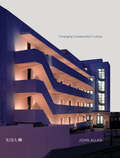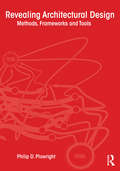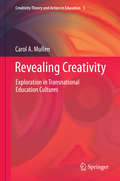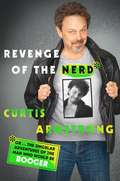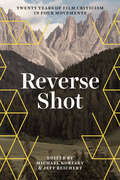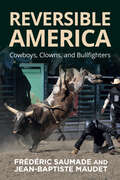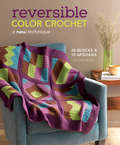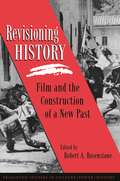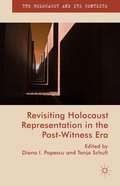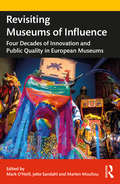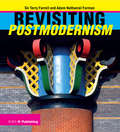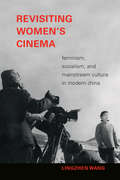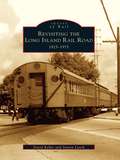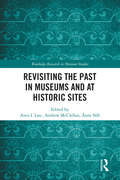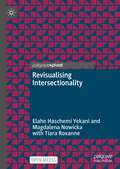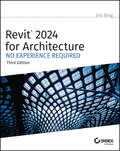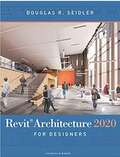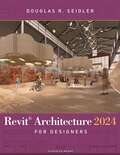- Table View
- List View
Revaluing Modern Architecture: Changing conservation culture
by John AllanThe conservation of our Modern architectural heritage is a subject of vehement debate. When do buildings become old or significant enough to warrant special heritage status and protection? Should Modern listed buildings be treated differently from those of earlier periods? And what does all this mean for building users and owners, who might be better served if their buildings were less authentic, but more comfortable and usable? Presenting a clear line of sight through these complex questions, this book explores the conservation, regeneration and adaptive re-use of Modern architecture. It provides a general grounding in the field, its recent history and current development, including chapters on authenticity, charters, listing and protection. Case studies drawing on the author’s extensive practical experience offer valuable lessons learnt in the conservation of Modern heritage buildings. Looking beyond the specialist field of ‘elite’ heritage, Revaluing Modern Architecture also considers the changing culture of conservation for ‘sub-iconic’ buildings in relation to de-carbonisation and the climate emergency. It suggests how revaluing the vast legacy of modern architecture can help to promote a more sustainable future. Features leading conservation projects, such as the celebrated Penguin Pool at London Zoo, Finsbury Health Centre by Lubetkin & Tecton and Wells Coates’ Isokon (Lawn Road) Flats, as well as previously unpublished projects. Analyses key Modern conservation controversies of recent years Illustrated with over 160 photos and drawings. An essential primer for architectural students and practitioners, academics, those employed in conservation and planning, property owners, developers, surveyors and building managers.
Revealing Architectural Design: Methods, Frameworks and Tools
by Philip PlowrightRevealing Architectural Design examines the architectural design process from the point of view of knowledge domains, domain syntax, coherence, framing, thinking styles, decision-making and testing. Using straightforward language, the book connects general design thinking to underlying frameworks that are used in the architectural design process. The book provides historical grounding as well as clear examples of real design outcomes. It includes diagrams and explanations to make that content accessible. The frameworks and their methods are described by what they can accomplish, what biases they introduce and the use of their final outcomes. Revealing Architectural Design is an advanced primer useful to anyone interested in increasing the quality of their architectural design proposals through understanding the conceptual tools used to achieve that process. While it is intended for undergraduate and graduate students of architectural design, it will also be useful for experienced architectural practitioners. For the non-architect, this book opens a window into the priorities of a discipline seldom presented with such transparency.
Revealing Change in Cultural Landscapes: Material, Spatial and Ecological Considerations
by Catherine HeatheringtonThis book explores different design approaches to revealing change within a landscape, and examines how landscape designers bring together the cultural context of a specific place with material, spatial and ecological considerations. Revealing Change in Cultural Landscapes includes case studies such as Gilles Clément’s Jardin du Tiers-Paysage in France, the Brick Pit in Sydney, Australia and Georges Descombes’ Renaturation of the River Aire in Switzerland to uncover the insights of designers. In doing so, Catherine Heatherington considers the different ways designers approach the revealing of change and how this informs a discussion about people’s perceptions and understanding of landscape. With over 100 images and contributions from Jacky Bowring, Dermot Foley and Krystallia Kamvasinou, this book will be beneficial for students of landscape and landscape architecture, particularly those with an interest in how landscapes change over time and how this is perceived by both designers and visitors.
Revealing Creativity: Exploration in Transnational Education Cultures (Creativity Theory and Action in Education #5)
by Carol A. MullenRevealing Creativity: Exploration in Transnational Education Cultures explores the recovery and fostering of creativity under educational constraint. This longitudinal global study of diverse education populations in China, Canada, and Australia offers application of the 4-C Creativity Model through experiential activities and exploratory interviews within classrooms and other learning spaces. Transnational in scope, this book describes an original innovative method, process, and tool for addressing obstacles to creativity in educational environments and within the self that constitute a significant challenge to practice. Through an immersive encounter with a validated creativity model, diverse cultural groups were guided to interpret the 4-C classification system and uncover their latent potential as creators. For their own purposes, readers can adapt the dynamic model-as-method process for releasing and revealing creativity within accountability-bound competitive cultures.
Revenge of the Nerd: Or . . . The Singular Adventures of the Man Who Would Be Booger
by Curtis ArmstrongRisky Business. Revenge of the Nerds. Better Off Dead. Moonlighting. Supernatural. American Dad. New Girl. What do all of these movies and television shows have in common?Curtis Armstrong.A legendary comedic second banana to a litany of major stars, Curtis is forever cemented in the public imagination as Booger from Revenge of the Nerds. A classically trained actor, Curtis began his incredible 40-year career on stage but progressed rapidly to film and television. He was typecast early and it proved to be the best thing that could have happened. But there’s more to Curtis’ story than that. Born and bred a nerd, he spent his early years between Detroit, a city so nerdy that the word was coined there in 1951, and, improbably, Geneva, Switzerland. His adolescence and early adulthood was spent primarily between the covers of a book and indulging his nerdy obsessions. It was only when he found his true calling, as an actor and unintentional nerd icon, that he found true happiness. With whip-smart, self-effacing humor, Armstrong takes us on a most unlikely journey—one nerd’s hilarious, often touching rise to the middle. He started his life as an outcast and matured into…well, an older, slightly paunchier, hopefully wiser outcast.In Hollywood, as in life, that counts as winning the game.
Reverse Glass Painting
by Anne DimockBasic skills from an expert. 14 projects with patterns provided. Full-color, step-by-step photographs.
Reverse Shot: Twenty Years of Film Criticism in Four Movements
by Michael KoreskyFor twenty years, Reverse Shot, a journal for film criticism and the house publication of New York’s Museum of the Moving Image, has been a home for movie lovers to find incisive, intelligent writings from a diverse group of the best critics working today.To celebrate the publication's run, MoMI has published this special anniversary anthology, which collects central pieces from the journal’s beginnings up through the latest releases. Broken into four chronological movements, this volume captures not only the films and filmmakers that Reverse Shot’s writers have championed and wrestled over but also tells a story of cinema’s progress and change over the first two decades of the 21st century.More than just for the many longtime readers of Reverse Shot, this collection is an essential reference for the past, present, and future of the moving image and a gift for anyone who cares about films and serious writings about them.“This New York-based publication has remained not only a beacon for quality film writing but also, in so many cases, the domain for the internet’s best piece on a given film. ... Digging into the earliest writings here affirms a site quickly setting an Olympian standard for online movie analysis, pole-vaulting even over many esteemed print publications with less space to play with on the page ... Any one essay gives you a taste of the levels of insight routinely put to bear by its shifting stable of contributors, including Nick Pinkerton, Genevieve Yue, Eric Hynes and Devika Girish.” —Sight & Sound magazine, March 2024
Reversible America: Cowboys, Clowns, and Bullfighters
by Frédéric Saumade Jean-Baptiste MaudetRodeo, cattle ranching, and bullfighting converge in the arenas of race, gender, and ethics in Reversible America. In Southwestern California, these sports manifest in spectacular expressions of transcultural interactions that continue to develop through border crossings. Using an interdisciplinary scope, this unique look into the subculture negotiates the paradoxes and connections between the popular American performances, Iberian bullfighting, and Native American hunting methods, along with the relationship between human and non-human beings, and systems of value across borders.
Reversible Bucket Bag
by Lisa LamFrom The Bag Making Bible by Lisa Lam Half the fun of making this cheerful bag is choosing three fabrics that all look fabulous together. Once you have chosen the fabrics you'll find this bag just kind of makes itself! The more you piece it together (like a colorful jigsaw) the more you'll want to see the yummy finished result. Pop a pretty fabric flower onto the button closure for an extra touch of cuteness.
Reversible Color Crochet: A New Technique
by Laurinda ReddigCreate completely reversible colorwork afghans and more! Innovative crocheter Laurinda Reddig created a unique and award-winning form of crochet that produces clear images that look exactly the same on both sides. Learn about this new method along with 28 reversible squares suitable for afghans or other items, make one of the 10 projects that use them, or find inspiration to design your own! Laurinda explains the basics of her technique and how to work with multiple colors at the same time. She demonstrates how to create graphic colorwork squares that range from simple geometric angles and shapes to a variety of picture squares including quilt-inspired blocks, flowers, the sun & moon, robots, aliens, and other fun projects for children. Create all 10 afghan projects complete with directions for joining, edging, and any additional stitch patterns used. Open your eyes to a whole new crochet technique--you won't want to miss it!
Review of EPA Homeland Security Efforts: Safe Buildings Program Research Implementation Plan
by Committee on Safe Buildings ProgramThe report examines the Environmental Protection Agency’s three-year plan for a comprehensive response to a chemical or biological attack on a civilian or public sector facility. The report states that EPA has correctly identified the essential major research areas (detection, containment, decontamination, and disposal) but calls for an initial focus on decontamination and disposal efforts and a longer term research program.
Reviewing Culture Online: Post-Institutional Cultural Critique across Platforms
by Maarit JaakkolaThis book examines how ordinary users review cultural products online, ranging from books to films and other art objects to consumer products. The book maps different communities—in institutional and non-institutional settings—which intersect with the genre of review, especially in the social web where reviewing is conducted on platforms such as Instagram, YouTube and Vimeo. The book, drawing on the key concepts of cultural intermediation, platformized cultural production and post-professionalism, looks at user-generated content in lifestyle communities beyond the binary of professional and amateur production.
Reviewing Shakespeare
by Paul PrescottRanging from David Garrick's Macbeth in the 1740s to the World Shakespeare Festival in London 2012, this is the first book to provide in-depth analysis of the history and practice of Shakespearean theatre reviewing. Reviewing Shakespeare describes the changing priorities and interpretative habits of theatre critics as they have both responded to and provoked innovations in Shakespearean performance culture over the last three centuries. It analyses the conditions – theatrical, journalistic, social and personal – in which Shakespearean reception has taken place, presenting original readings of the works of key critics (Shaw, Beerbohm, Agate, Tynan), whilst also tracking broader historical shifts in the relationship between reviewers and performance. Prescott explores the key function of the 'night-watch constable' in patrolling the boundaries of legitimate Shakespearean performance and offers a compelling account of the many ways in which newspaper reviews are uniquely fruitful documents for anyone interested in Shakespeare and the theatre.
Revisioning History: Film and the Construction of a New Past (Princeton Studies in Culture/Power/History #5)
by Robert A. RosenstoneIn Revisioning History thirteen historians from around the world look at the historical film on its own terms, not as it compares to written history but as a unique way of recounting the past. How does film construct a historical world? What are the rules, codes, and strategies by which it brings the past to life? What does that historical construction mean to us? In grappling with these questions, each contributor looks at an example of New History cinema. Different from Hollywood costume dramas or documentary films, these films are serious efforts to come to grips with the past; they have often grown out of nations engaged in an intense quest for historical connections, such as India, Cuba, Japan, and Germany. The volume begins with an introduction by Robert Rosenstone. Part I, "Contesting History," comprises essays by Geoff Eley (on the film Distant Voices, Still Lives), Nicholas B. Dirks (The Home and the World), Thomas Kierstead and Deidre Lynch (Eijanaika), and Pierre Sorlin (Night of the Shooting Stars). Contributing to Part II, "Visioning History," are Michael S. Roth (Hiroshima Mon Amour), John Mraz (Memories of Underdevelopment), Min Soo Kang (The Moderns) and Clayton R. Koppes (Radio Bikini). Part III, "Revisioning History" contains essays by Denise J. Youngblood (Repentance), Rudy Koshar (Hitler: A Film from Germany), Rosenstone (Walker), Sumiko Higashi (Walker and Mississippi Burning), and Daniel Sipe (From the Pole to the Equator).
Revisiting Holocaust Representation in the Post-Witness Era
by Diana I. PopescuRevisiting Holocaust Representation in the Post-Witness Era shifts focus from discussions on the ethics and limits of representation to the relevance of imagination in Holocaust commemoration. It re-examines ethical, aesthetic and political dilemmas arising from the crucial transfer of memory from the realm of 'living memory' contained by the survivors and their families, to culturally and politically mediated memory practices realised by post-witness generations. Why are artistic imaginative representations of the Holocaust important now? Critical analyses of little discussed artworks, memorials, film, comics and literature point to a diversification of approaches and Holocaust re-presentations in Europe, showing that memory and imagination are increasingly and intimately intertwined. This volume's contributions make apparent the genuine struggle among those born after the Holocaust, whether Jewish, Polish, German, Austrian, or Swedish, to make the past relevant in the present, well-aware that one cannot fully own or comprehend it.
Revisiting Museums of Influence: Four Decades of Innovation and Public Quality in European Museums
by Edited by Mark O’Neill, Jette Sandahl and Marlen MouliouRevisiting Museums of Influence presents 50 portraits of a range of European museums that have made striking innovations in public quality over the past 40 years. In so doing, the book demonstrates that excellence can be found in museums no matter their subject matter, scale, or source of funding. Written by leading professionals in the field of museology, who have acted as judges for the European Museum of the Year Award, the portraits describe museums that had, or should have had, an influence on other museums around the world. The portraits aim to capture the moment when this potential was identified, and the introduction will locate the institutions in the wider history of museums in Europe over the period, as well as drawing out common themes of change and innovation that unite the portraits. Providing many very diverse portraits, Revisiting Museums of Influence captures the immense capacity of the museum to respond to changing societal needs. As a result, the book will be essential reading for students of museology and museum professionals around the world in shaping the museums they wish to create. Scholars and students of art history, archaeology, ethnography, anthropology, cultural and visual studies, architecture, memory studies and history will also find much to interest them.
Revisiting Postmodernism
by Terry Farrell Adam Nathaniel FurmanRevisiting Postmodernism offers an engaging, wide-ranging and highly illustrated account of postmodernism in architecture from its roots in the 1940s to its ongoing relevance today. This book invites readers to see Postmodernism in a new light: not just a style but a cultural phenomenon that embraces all areas of life and thrives on complexity and pluralism, in contrast to the strait-laced, single-style, top-down inclination of its predecessor, Modernism. While focusing on architecture, this book also explores aspects such as urban masterplanning, furniture design, art and literature. Looking at Postmodernism through the lens of examples from around the world, each chapter explores the movement in the UK on the one hand, and its international counterparts on the other, reflecting on the historical movement but also how postmodernism influences practices today. This book offers the insider’s view on postmodernism by the author, a recognised pioneer in the field of postmodern architecture and a prestigious and authoritative participant in the postmodern movement.
Revisiting Women's Cinema: Feminism, Socialism, and Mainstream Culture in Modern China (a Camera Obscura book)
by Lingzhen WangIn Revisiting Women’s Cinema, Lingzhen Wang ponders the roots of contemporary feminist stagnation and the limits of both commercial mainstream and elite minor cultures by turning to socialist women filmmakers in modern China. She foregrounds their sociopolitical engagements, critical interventions, and popular artistic experiments, offering a new conception of socialist and postsocialist feminisms, mainstream culture, and women’s cinema. Wang highlights the films of Wang Ping and Dong Kena in the 1950s and 1960s and Zhang Nuanxin and Huang Shuqin in the 1980s and 1990s to unveil how they have been profoundly misread through extant research paradigms entrenched in Western Cold War ideology, post-second-wave cultural feminism, and post-Mao intellectual discourses. Challenging received interpretations, she elucidates how socialist feminism and culture were conceptualized and practiced in relation to China’s search not only for national independence and economic development but also for social emancipation, proletarian culture, and socialist internationalism. Wang calls for a critical reevaluation of historical materialism, socialist feminism, and popular culture to forge an integrated emancipatory vision for future transnational feminist and cultural practices.
Revisiting the Long Island Rail Road: 1925-1975
by David Keller Steven LynchPlanned and chartered on April 24, 1834, the Long Island Rail Road commenced operations in 1836 to provide a route to Boston. Stretching 110 miles east of New York City, the Long Island Rail Road has been the backbone of population growth and suburban development for over ahundred years. Electrification was begun on the Long Island Rail Road in 1905. Whether it was commuter, freight, or special trains, third-rail operations played a major role in the Long Island Rail Road's development as well as the people, places, and industries it served. This book offersan insider's view of the Morris Park shops and photographs of the varied passenger operations found on the Long Island Rail Road.
Revisiting the Past in Museums and at Historic Sites (Routledge Research in Museum Studies)
by Anca I. Lasc Andrew McClellan Änne SöllRevisiting the Past in Museums and at Historic Sites demonstrates that museums and historic spaces are increasingly becoming "backdrops" for all sorts of appropriations and interventions that throw new light upon the objects they comprise and the pasts they reference. Rooted in new scholarship that expands established notions of art installations, museums, period rooms, and historic sites, the book brings together contributions from scholars from intersecting disciplines. Arguing that we are witnessing a paradigm shift concerning the place of historic spaces and museums in the contemporary imaginary, the volume shows that such institutions are merging traditional scholarly activities tied to historical representation and inquiry with novel modes of display and interpretation, drawing them closer to the world of entertainment and interactive consumption. Case studies analyze how a range of interventions impact historic spaces and conceptions of the past they generate. The book concludes that museums and historic sites are reinventing themselves in order to remain meaningful and to play a role in societies aspiring to be more inclusive and open to historical and cultural debate. Revisiting the Past in Museums and at Historic Sites will be of interest to students and faculty who are engaged in the study of museums, art history, architectural and design history, social and cultural history, interior design, visual culture, and material culture.
Revisiting the Toolbox of Discourse Studies: New Trajectories in Methodology, Open Data, and Visualization (Postdisciplinary Studies in Discourse)
by Markus RheindorfThis book revisits discourse analytic practice, analyzing the idea that the field has access to, provides, or even constitutes a ‘toolbox’ of methods. The precise characteristics of this toolbox have remained largely un-theorized, and the author discusses the different sets of tools and their combinations, particularly those that cut across traditional divides, such as those between disciplines or between quantitative and qualitative methods. The author emphasizes the potential value of integrating methods in terms of triangulation and its specific benefits, arguing that current trends in Open Science require Discourse Studies to re-examine its methodological scope and choices, and move beyond token acknowledgements of ‘eclecticism’. In-depth case studies supplement the methodological discussion and demonstrate the challenges and benefits of triangulation. This book will be a valuable resource for students and scholars in Discourse Studies, particularly those with an interest in combining methods and working across disciplines.
Revisualising Intersectionality
by Magdalena Nowicka Elahe Haschemi Yekani Tiara RoxanneRevisualising Intersectionality offers transdisciplinary interrogations of the supposed visual evidentiality of categories of human similarity and difference. This open-access book incorporates insights from social and cognitive science as well as psychology and philosophy to explain how we visually perceive physical differences and how cognition is fallible, processual, and dependent on who is looking in a specific context. Revisualising Intersectionality also puts into conversation visual culture studies and artistic research with approaches such as gender, queer, and trans studies as well as postcolonial and decolonial theory to complicate simplified notions of identity politics and cultural representation. The book proposes a revision of intersectionality research to challenge the predominance of categories of visible difference such as race and gender as analytical lenses.
Revit 2024 for Architecture: No Experience Required
by Eric WingThe latest and most authoritative version of the popular step-by-step tutorial for Revit Architecture The newly revised third edition of Revit 2024 for Architecture: No Experience Required is the latest update to the market-leading, real-world guide for learning and building with Revit—the powerful and sophisticated Building Information Modeling (BIM) software used by professionals around the world. This popular, user-friendly book teaches you the Revit interface and helps you understand the foundational concepts and features of the software. You’ll learn to design, document, and present a 3D BIM project with a continuous, step-by-step tutorial that guides you through every phase of the project: from placing walls, doors, windows, structural elements, dimensions, and text, to generating documentation, advanced detailing, site grading, construction scheduling, material takeoffs, and more. In addition, this book helps you prepare for the Autodesk Revit Architecture Certification Exam. Throughout the book, you will find helpful insights directly related to the exam. The last two chapters are dedicated entirely to the exam with a practice test at the end of the book. You’ll also: Learn each phase of designing, documenting, and presenting a four-story office building using a simple yet engaging continuous tutorial Follow the tutorial sequentially or jump to any chapter by downloading the project files from the Sybex website Use the start-to-finish tutorial project as a reference for your own real-world projects and to develop a powerful Revit skillset Gain thorough knowledge of Revit’s essential concepts and features to make the move from 2D drafting to 3D building information modeling Get up to speed with advanced features, including new coverage of advanced walls, families, sites, topography, and moreThe Autodesk Revit 2024 for Architecture: No Experience Required, 3rd Edition, is the go-to guide for professionals and students seeking to learn Revit’s essential functions quickly and effectively.
Revit Architecture 2020 for Designers
by Douglas R. SeidlerBuilding information modeling (BIM) is rapidly replacing AutoCAD as the digital drawing tool of choice for architect and interior designers-and Revit ® Architecture is the leading software package in the BIM marketplace. Neither simplistic nor exhaustive, Revit ® Architecture 2020 for Designers is written specifically for architects and interior designers learning digital drawing for the first time or transitioning from CAD to BIM. <p><p>Beginning with the building blocks of BIM (levels, walls, windows, and doors), the book progresses through in-depth instructions to create both presentation drawings and construction documents. Advanced features are also covered such as custom families, photorealistic rendering, custom title blocks, and exporting drawings to AutoCAD ® and SketchUp. <p><p>Instructions are fully illustrated, creating smooth transition to the BIM environment for all designers. Clear, concise, and above all visual, this is the Revit guide written specifically for interior designers and architects.
Revit Architecture 2024 for Designers
by Douglas R. SeidlerRevit is rapidly replacing AutoCAD as the digital drawing tool of choice for architects and interior designers. This book aims to help design students master Revit as a tool in the design studio and in practice. Revit Architecture 2024 for Designers is both a thorough primer for new learners and expanded conceptual discussion for design professionals. The progressive introduction of concepts (chapters build on previous chapters), digital exercises, and professional examples make this book easy to follow for learners new to Revit. Packed with visual examples, Revit Architecture 2024 for Designers is written specifically for architecture students and interior design students. It provides a thorough primer for new learners and advanced instruction for designers.
